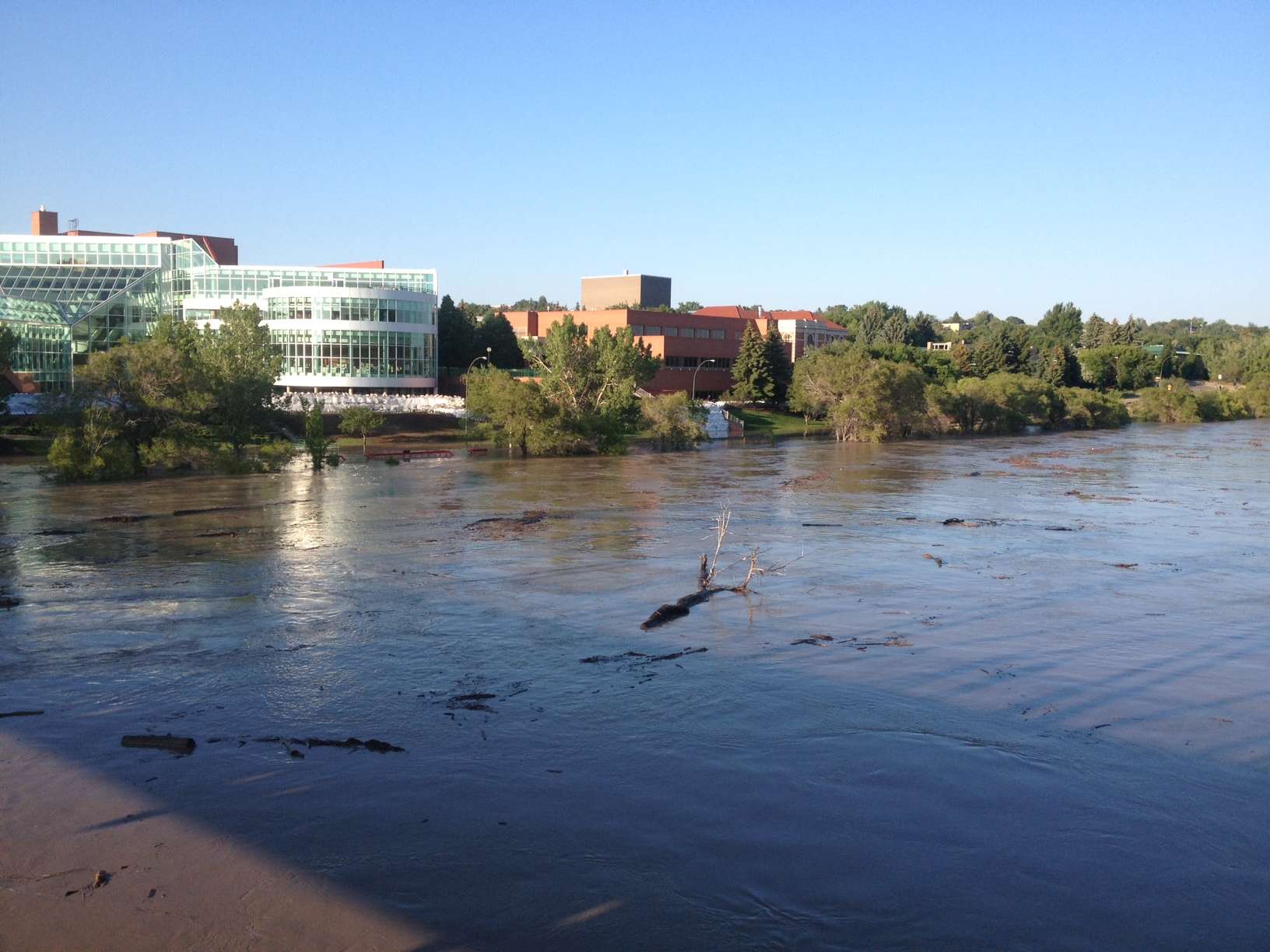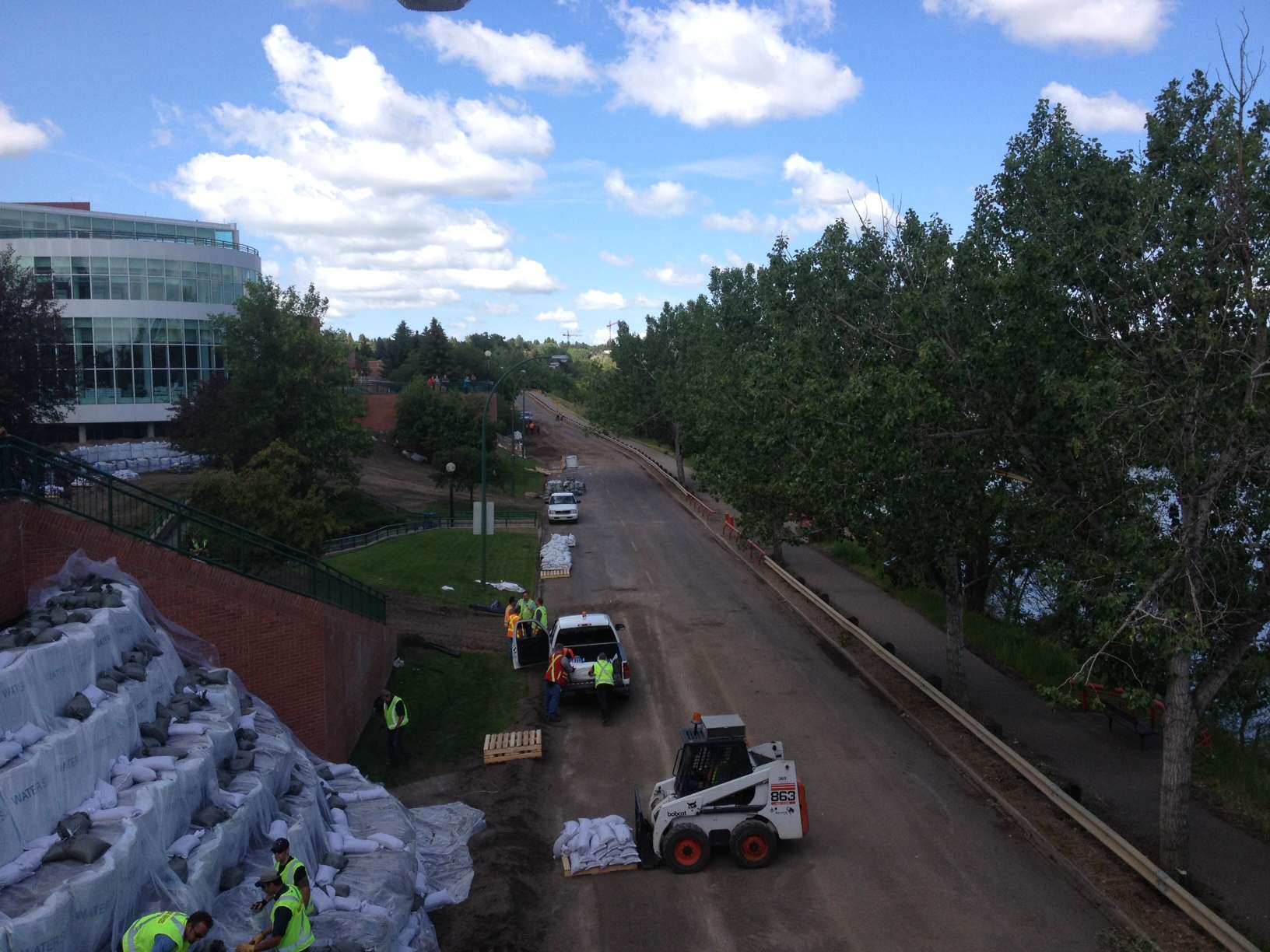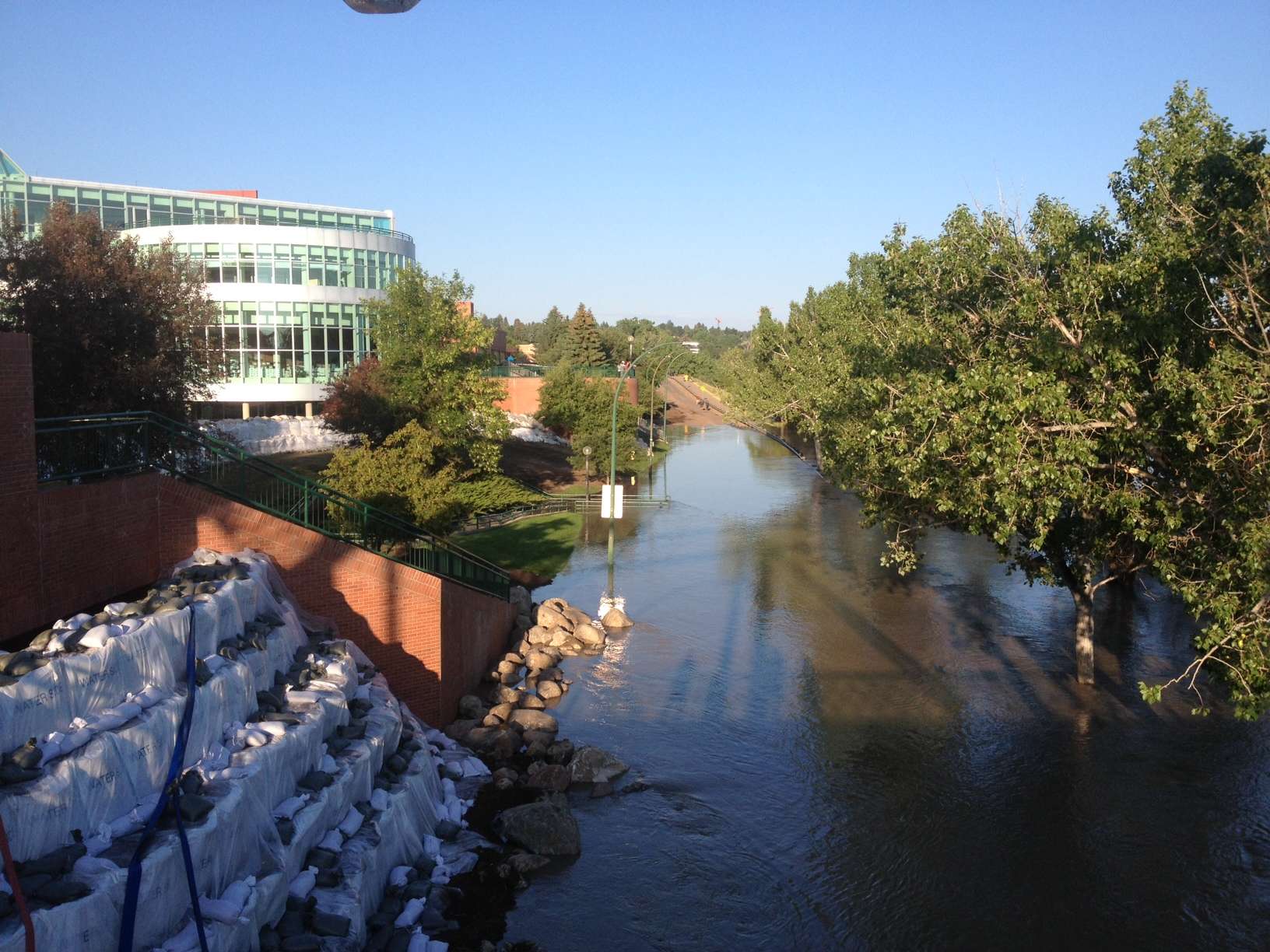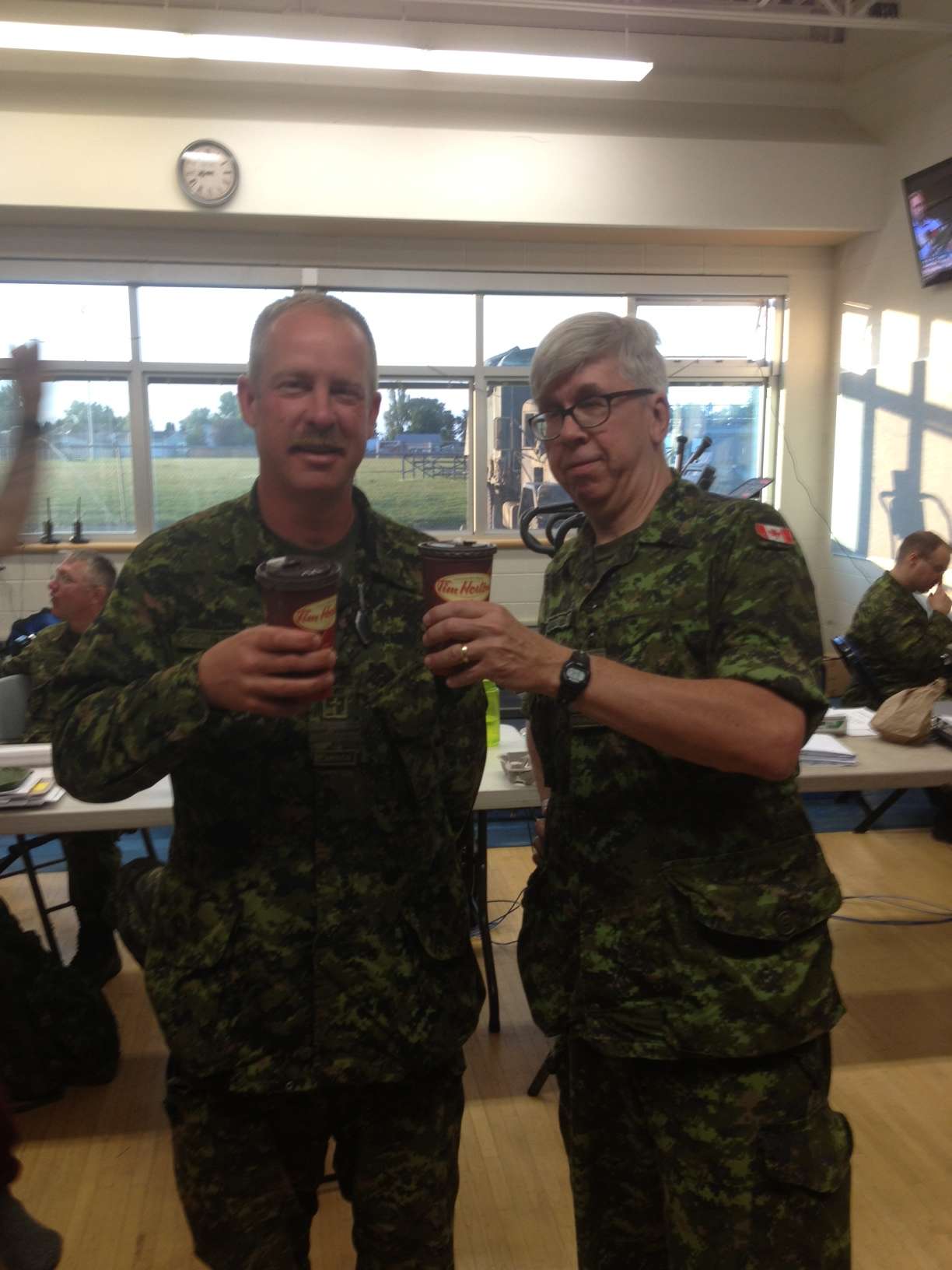Just over a month ago southern Alberta experienced unseasonably heavy rains which caused significant flooding from the Rocky Mountains through Calgary as far east as Medicine Hat, where I currently live. It was a tense time, but one in which the Canadian Armed Forces distinguished itself in a series of rapidly mounted rescue and engineering operations. A brief description of those operations, and some photos of flooded Medicine Hat, can be found here.
Today the city is back to normal and gearing up for its annual Rodeo Week. Kay and I were downtown today for another summer highlight, the Chili Cookoff, and wandered around downtown on a hot day under clear skies. It was quite a different mood from a month ago, when the city felt like it was under siege. I took some photos at the time but haven't had time to post them until now.
This was the scene in front of City Hall on Saturday, June 22. The flood had already hit Calgary and South Saskatchewan River was expected to crest on Sunday.
Looking north from the Finlay Bridge at the South Saskatchewan River, which was already higher than I'd ever seen it.
By early Sunday, June 23, the SSkR was over its banks and rising. Here's the same view of the now aptly named River Road in front of City Hall that morning.
From the middle of the Finlay Bridge that morning, showing significant amounts of debris racing down the river.

And looking east from the Findlay Bridge at the CP Rail Bridge, where, it was said, the railway had left cars parked on it to add weight and stability.
By Saturday night the CFB Suffield was working closely with the City of Medicine Hat, coordinating whatever material and personnel resources we had that the City could use. Our engineering and logistics personnel were working hard that day, and were also preparing to support a battlgroup from the Army's First Brigade, which was making the six hour road move south from Edmonton to arrive in our area Sunday. Kay and I had one of our young engineering officers over to dinner that evening, as the poor fellow had been working all day, and then I accompanied him to the City's emergency command facility to hang out and see things first hand. I will never forget being in the City war room and seeing a map which showed the worst case scenario, which assumed that the SSk River would crest at over 6000 cubic metres per second. Accprding to that map, every berm, levy and defence the city was building would be overwhelmed, tens of thousand would lose their homes and businesses, and the city would have been wrecked. As it was, ten thousand residents in low lying areas were under orders to evacuate. It was very sobering, and as I drove home that night I was grateful that Kay and I lived on high ground, out of any possible flood zone.
I recall that Sunday as being a fairly surreal day. After taking pictures on my morning run down by the bridges (the RiverGawk Run, as I called it) I drove to the base and marvelled at how strange it was to cross the bridge on the Trans Canada Highway, with the water just metres from the bridge bottom and still rising. During our chapel worship we prayed, quite earnestly, for our communities. After church I stopped in at the command center we had set up at the Base, but things were quiet there, as the battlegroup from Edmonton was on the ground and had taken over primary liason with the city. There was nothing more we could do but help them, and wait to see how high the river would crest, which was expected in the small hours of Monday morning. By 4pm that afternoon there was talk that every bridge across the SSk River would be closed, including the Trans Canada Highway, so not wanting to be cut off, I headed home. As it turned out, the TCH was never closed, though the two older road bridges in Medicine Hat, a city divided by the river, were closed that afternoon and remained closed for several days.
Sunday evening I learned that my friend Padre Howard, the chaplain to the 3rd Battalion, the Princess Patricia's Canadian Light Infantry, was across the river with his unit in a high school, and would be going out that night to sandbag. Since the TCH was open, I crossed over to visit, and not wanting to show up empty-handed, I stopped first at the only Tim Horton's coffee shop left open to get a dozen large "double double" (two cream, two sugar), or as the troops say, "NATO standard" coffees. I was very pleased when the Timmies manager gave them and a bag of cookies to me at no charge. For my non-Canadian readers, this sort of thing, plus delicious, addictive coffee, is why Timmies is a Canadian icon.
The author and Padre Howard Rittenhouse (left) enjoying their TH coffee.
At 9pm I stowed away on a bus with Howard and thirty odd soldiers from the Patricia's HQ company, crossing a now-closed bridge and heading into the heart of the flood zone, in a part of Medicine Hat called "The Flats". Much of the hard work had already been done. Rows of interlocked wire cylinders, called Hesco, had already been placed along streets and were being filled with dirt and gravel by front end loaders. The science and engineering behind this was obviously carefully thought out, and it was heartbreaking to see how the planners had decided that some parts of the neighbourhood could be defended this way, and others sacrificed. The Flats were mostly dark, with power and gas cut off, and police watching as the last evacuees left. One fellow, who had retured to get his vintage motorcycle, called out his thanks as he left, even though his house was on the wrong side of the Hesco defences. That was pretty moving. For the rest of the night, like typical grunts in a bigger battle, we wandered the neighbourhood, sometimes getting lost, filling and stacking sandbags according to a larger plan that we didn't really understand. The troops I was with had been working for almost two days straight with only a few hours sleep, and were uncertain if they would get their leave in a few days, as 3 PPCLI had block leave for the summer scheduled soon. Nevertheless they were cheerful and hard working, and all had stories to tell of how locals had fed them and been kind to them in many ways. It was inspiring.
The story has a happy ending. The flood crested early Monday at around 5300 cu metres p/s, well below the doomsday scenario. Some homes and businesses were damaged, but it was widely agreed that the city had gotten off lucky, compared to towns further west like High River, which was devastated. The troops all went home by Wednesday and got their leave, and we at the Base went back to business as usual. Last week Kay and I were driving in the Flats and saw many homes with dumpsters out front, full of wet carpet and drywall, so clearly a lot of folks were affected, but it could have been much worse. For a few days the City pulled together, rich and poor alike, and some of the heroes wore uniforms. It was a high note to finish my three years here with. The following Sunday, in the Base Chapel, we gave thanks for prayers answered.








2 comments:
Inspiring stuff padre - I'm glad to see there were no deaths.
This is cool!
Post a Comment